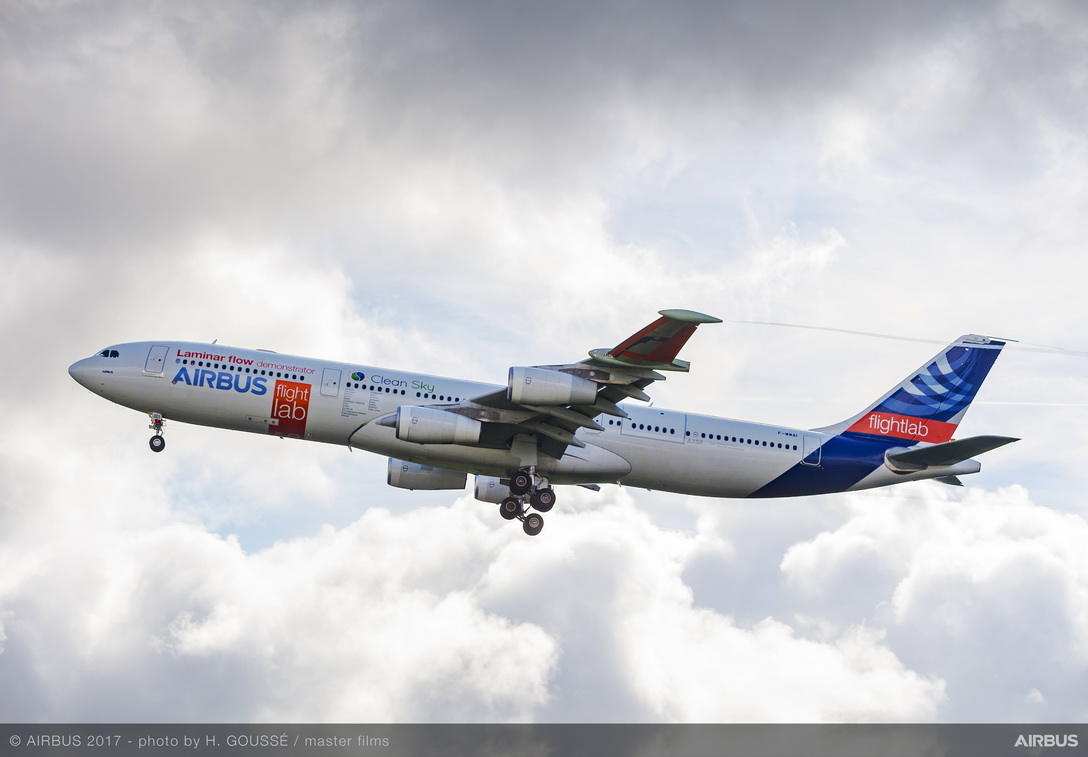The Breakthrough Laminar Aircraft Demonstrator in Europe (Blade) project aims to improve aviation’s ecological footprint, bringing with it a 50% reduction of wing friction and up to five percent lower CO2 emission.
The Airbus A340 laminar-flow “test demonstrator aircraft (A340-300 MSN001) has made its successful maiden flight for the EU-sponsored Clean Sky “Blade” project. The aircraft, dubbed "Flight Lab”, made a 3hr 38min flight from the Tarbes aerodrome in southern France to Toulouse Blagnac.
The Blade project — which stands for “Breakthrough Laminar Aircraft Demonstrator in Europe” — aims to assess the feasibility of introducing new technology for commercial aviation. It aims to improve aviation’s ecological footprint, bringing with it a 50% reduction of wing friction and up to five percent lower CO2 emission. Airbus says the A340 Flight Lab is the first test aircraft in the world to combine a transonic laminar wing profile with a true internal primary structure.
The aircraft is fitted with two representative transonic laminar outer wings, combined with a flight-test-instrumentation (FTI) station inside the cabin.
The waviness of the surface is measured at hundreds of points on the wings to ascertain its influence on laminarity — the first time that Airbus has used such a testing method on an aircraft. Other ‘firsts’ are the use of infrared cameras to measure wing temperature and the acoustic generator which measures the influence of acoustics on laminarity. In addition, there is also an innovative reflectometry system, which measures overall deformation in real-time during flight.
A key goal of Blade is to be able to measure the tolerances and imperfections which can be present and still sustain laminarity. To this end, Airbus will simulate every type of imperfection in a controlled manner, so that at the end of the campaign the tolerances for building a laminar wing will be fully known. The Flight Lab is due to perform around 150 flight hours in the coming months.

